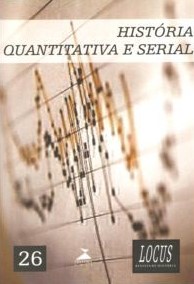Publicado 2020-08-12 — Atualizado em 2021-04-28
Versões
- 2021-04-28 (2)
- 2020-08-12 (1)
Palavras-chave
- Fazenda Santa Cruz,
- Escravidão,
- Familía escrava,
- Farinha de mandioca,
- Independência
- Cultura política,
- Clientelismo,
- Taxa de câmbio,
- Salvador,
- Bahia ...Mais
Como Citar
Copyright (c) 2020 Richard Graham

Este trabalho está licenciado sob uma licença Creative Commons Attribution 4.0 International License.
Resumo
Valiosas percepções podem ser extraídas de dados quantitativos,mesmo por historiadores não-quantitativos. Isto é particularmente verdadeiro porque tais dados freqüentemente sugerem padrões comuns de comportamento nem sempre vistos e muito menos compreendidos a seu tempo, bem como porque precisamente tais padrões gerais mostram importância de desvios particulares. A informação quantitativa também pode levar os pesquisadores a formular questões que, de outra forma, não pensariam em levantar, especialmente quando ela é sujeita à análise comparativa. Neste artigo, ofereço exemplos extraídos das minhas próprias experiências ao estudar temas como a família escrava, o número de escravos nas embarcações que abasteciam Salvador com alimento e seu papel na guerra de Independência na Bahia, o consumo per capita de farinha de mandioca em Salvador na primeira metade do século XIX, a cultura política do clientelismo durante a segunda metade do mesmo século e o poder aquisitivo do mil-réis de 1780 a 1860.

